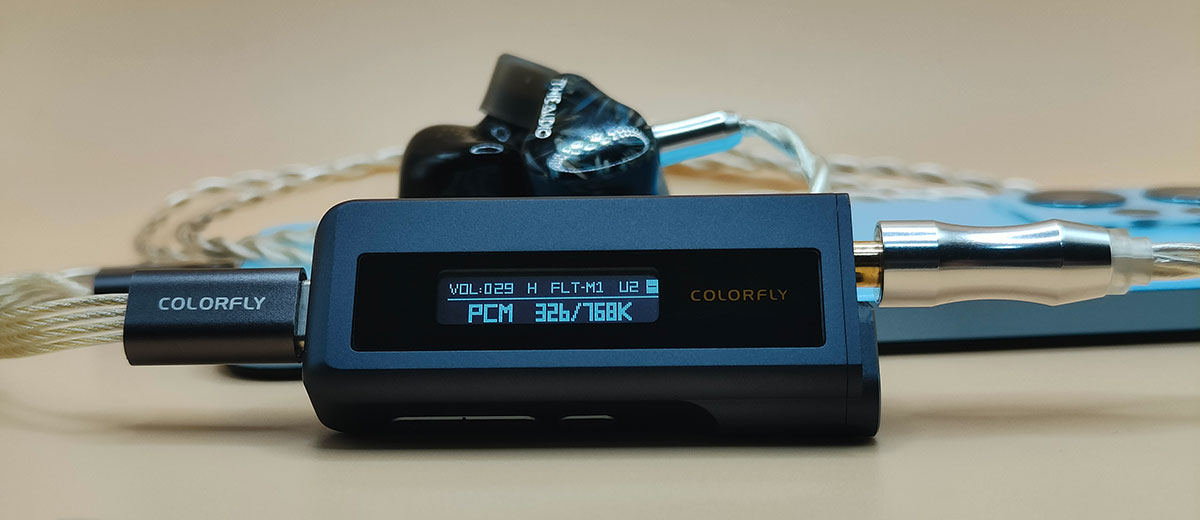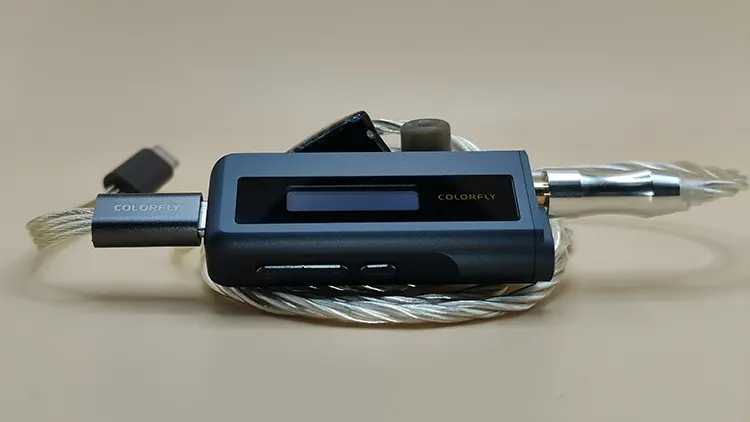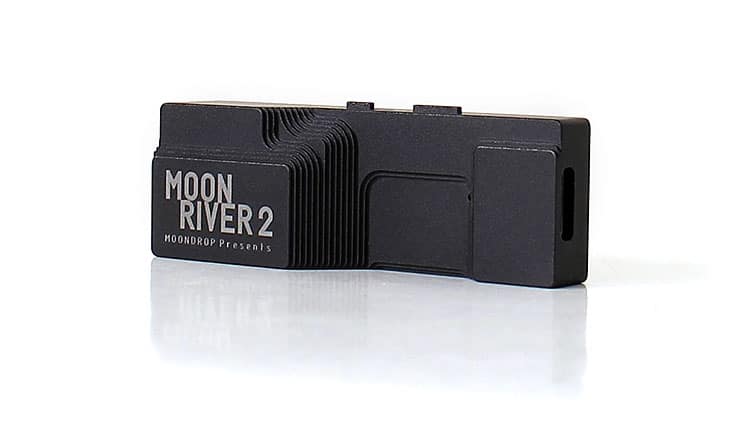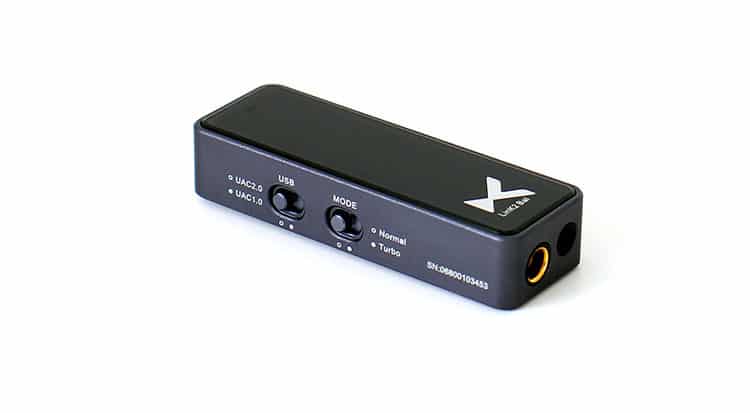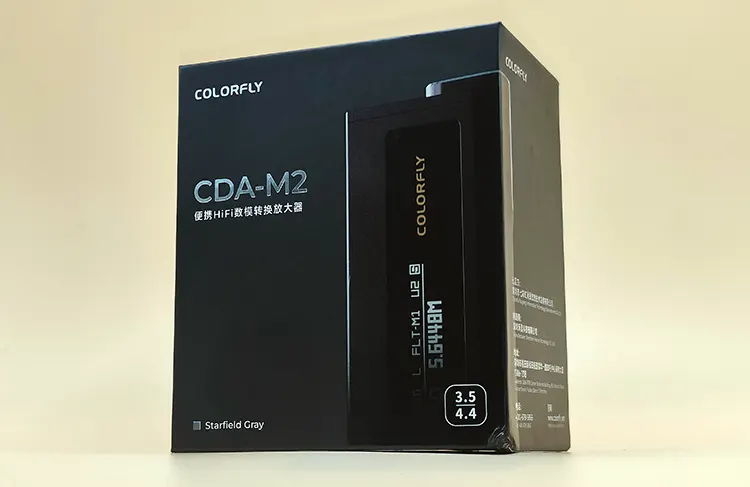Synergy
I’ve tried the Colorfly CDA-M2 with different IEMs. I’ve used it the most with the THIEAUDIO Hype 2 but I did try it with other IEMs namely the TRUTHEAR Nova, RAPTGO Bridge, and the FiiO JD7.
It helped all the IEMs I used. That added clarity and accuracy is something that I greatly appreciated since it’s an added refinement to the sound.
Most bass cannons here had some form of mud to them. Using it with the Colorfly CDA-M2 gave me the necessary cleanup to reduce the muddiness. All IEMs will benefit from the Colorfly CDA-M2. Giving the refinements to the clarity of IEMs is a great help.
Power was never an issue with it as well. I can comfortably put the volume of my laptop at maximum and just control the Colorfly CDA-M2’s built-in volume controls.
Usage with my phone is good on the power draw too. I don’t feel any unusual battery draining using it.
Select Comparisons
Moondrop MoonRiver 2
Technical
The Moondrop MoonRiver 2 uses two Cirrus CS43198 chipsets to power it. It supports DSD256 and 32bit/768kHz as well.
It has 3.5mm unbalanced and 4.4mm balanced outputs available. Using this with different devices won’t be a problem.
The 3.5mm unbalanced output can go up to 1.4Vrms on low gain and 2Vrms on high gain mode. Meanwhile, its 4.4mm balanced output goes up to 2.8Vrms on low gain and 4Vrms on high gain mode.
Design
The Moondrop MoonRiver 2 has a unique design. It looks like it’s 3D printed with how unique its design is.
They’re following a steampunk design with it. On the side of the 3.5mm and 4.4mm outputs, there’s a big hump to accompany it while its other side is a less elevated hump to accompany the USB-C port.
I guess I can say it looks like a skating rink with its design. The large hump has a stair-like design while the smaller one is a small square.
Despite this design, it’s an all-metal build too. On the front, there’s the MoonRiver 2 word printed on it while on the back is a schematic of where the chips are physically placed inside the unit.
It also has volume controls on its side. The other slider is for low and high gain mode changing.
Performance
The Moondrop MoonRiver 2 and the Colorfly CDA-M2 do opposite things. One focuses on high power and coloration, while another focuses on efficiency and cleanliness.
The Moondrop MoonRiver 2 is the former. It has a lot of power for its unbalanced modes, but the problem with that is that the power consumption gets affected.
Using it with my phone drains my device quickly. It also gets hotter than even the Colorfly CDA-M2.
Meanwhile, the Colorfly CDA-M2 is the latter. Its lower power draw for unbalanced use is a huge battery saver. It doesn’t drain my device than more I expected. It does get hot too, but nothing like the Moondrop MoonRiver 2.
Their sound is different too. One modifies the overall tonality while the other keeps it natural.
The Moondrop MoonRiver 2 gives brightness to the sound. I can hear more detail retrieval using this as part of that increased brightness. The Colorfly CDA-M2 keeps things neutral. It only adds some clarity to some aspects which gives it a natural sound reproduction.
Overall, if you need the extra power with an unbalanced usage then the Moondrop MoonRiver is the choice. But if you want a neutral presentation without any coloration, then the Colorfly CDA-M2 is the answer.
xDuoo Link2 Bal
Technical
The xDuoo Link2 Bal uses dual CS43131 chips and a TI LM27762 chip. It supports 32bit/384kHz and DSD256, with an LM27762 chip for managing the noise floor.
It has both 3.5mm unbalanced and 4.4mm unbalanced outputs. Its 3.5mm unbalanced can go up to 125mW, while its 4.4mm balanced output can go up to 270mW into a 32Ω load.
Design
The xDuoo Link2 Bal has a premium design with glass and metal. It’s similar to how phones are designed in my opinion.
There’s glass that is curved at 2.5D on the front and metal on the back. It has buttons for volume control and mode changes on the sides, and the 3.5mm and 4.4mm outputs on the bottom.
It reminds me of a chocolate bar with how lengthy and thin it is. In front, there’s the Link2 Bal word and the xDuoo logo, while on the back is nothing but metal.
The sides are filled with controls to the brim. We have buttons and switches to control the USB mode, UAC type, volume, and more.
Performance
The xDuoo Link2 Bal and Colorfly CDA-M2 do similar things for the sound. For starters, they keep things relatively neutral without any significant coloration.
Design-wise, they also differ here. The Colorfly CDA-M2 has an OLED screen that shows you real-time information, while the xDuoo Link2 Bal uses switches to show it.
Sound-wise, they’re strikingly similar with their focus on neutral and faithful sound reproduction. Both of them keep up with each other.
The difference lies in their power efficiency and heat management. The xDuoo Link2 Bal suffers from worse power efficiency and heat management, while the Colorfly CDA-M2 manages it slightly better.
I can feel the Xduoo Link2 Bal heating up quicker and draining the power faster compared to the Colorfly CDA-M2. But for the weight, they’re relatively the same as well.
Overall, they have a similar approach to sound. The power efficiency and heat are the deciding factors here.
Our Verdict
The Colorfly CDA-M2 dongle DAC with its OLED display, good device support, and excellent, neutral sound levels of power, make it a worthy high-end dongle. The all-metal build also adds to the impression of a premium pitch.
It has all the essentials you’d need for a powerful all-around device for audio needs both portable and desktop use without breaking the bank.
Colorfly CDA-M2 Technical Specifications
- Dimensions: 58 x 25 x 13.5mm
- Weight: 27 grams
- Decoding Formats: PCM 32bit/768kHz, DSD256/Native
- Headphone Jack: 3.5mm Unbalanced, 4.4mm Balanced
- Output Level: Unbalanced 1Vrms Low Gain, High Gain 2Vrms; Balanced 2Vrms Low Gain, 4Vrms High Gain
- Maximum Output Power: Unbalanced 125mW, Balanced 250mW

